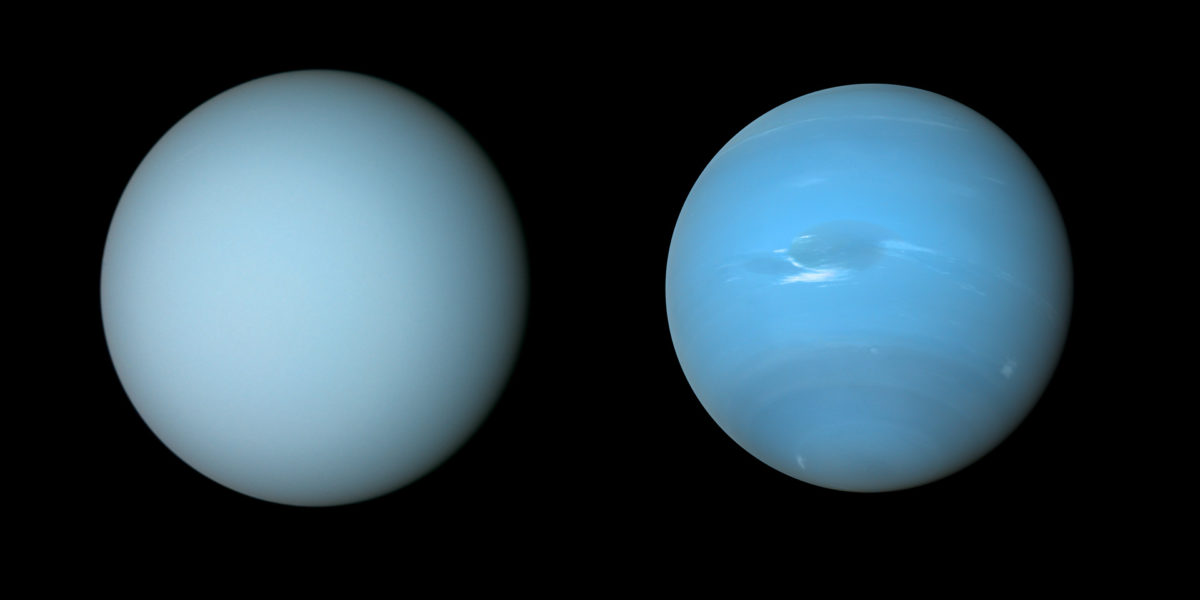Björn Jónsson • Mar 11, 2019
The subtle color difference between Uranus and Neptune
Planetary color can be highly subjective. The human eye is less sensitive to color in faintly lit environments. This is of particular importance when processing images of Uranus, or Neptune, where the sunshine is almost 1,000 times fainter than it is on Earth.
The Voyager 2 spacecraft flew by Uranus and Neptune in 1986 and 1989, respectively. Compared to modern spacecraft, the color data from Voyager 2 is of relatively low quality. However, it is possible to use the visible light spectrum of Uranus and Neptune to compute their average global color and then use this to correct the color of the Voyager 2 images. The color of Uranus and Neptune is similar, but not identical. Uranus appears greener and Neptune bluer.

These Voyager 2 images of Uranus and Neptune show this color difference. They are constructed from orange, green and blue filtered images. The color has been corrected based on the visible light spectrum of Uranus and Neptune to approximate what these planets would look like under identical illumination conditions. Due to the faint sunlight at both planets, the colors would probably appear somewhat less saturated to a human aboard a spacecraft near these planets than it appears in these images. But it is obvious from these images that the color of these two planets is not identical.
The Time is Now.
As a Planetary Defender, you’re part of our mission to decrease the risk of Earth being hit by an asteroid or comet.
Donate Today

 Explore Worlds
Explore Worlds Find Life
Find Life Defend Earth
Defend Earth

